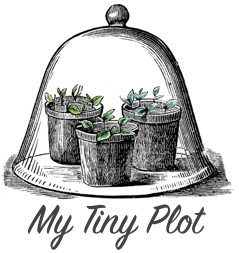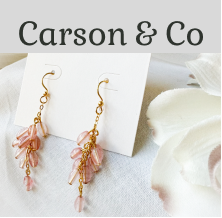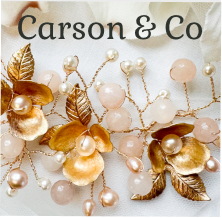Drawing a Garden Plan (again!)

I’m preparing the notes for my upcoming workshop over at The Bath Gardening School. I really want everyone to walk away from the workshop feeling that growing vegetables is EASY and that they can do it with really just a basic set of information.
I also want everyone to go home with a plan of their garden (hopefully drawn to scale) with the proper rotation in place (if that’s what they want to do) and a good idea of what they will grow in each bed for the next 3 – 4 years. This is somewhat ambitious, I know. But I think I would have felt so confident if someone had sat down with me and done that six years ago. As it was I fumbled along by myself and made lots of mistakes in the first few years.
I don’t see gardening as an exact science. There are tons of factors that affect what you can and can’t grow, not just soil, position and aspect but also time constraints, lifestyle, and taste. But drawing a plan of your garden and thinking about, firstly what you want to grow, and secondly what you can grow in the space you have, is really getting you halfway there.
The one thing that frustrates me about the books is how they all ask you to plant your vegetables so far apart. 30 inches between two rows of Tomatoes! I really don’t do that – I can’t! I would end up with one bed of Potatoes and a few Lettuce if I stuck to the planting distances. So I’ll be telling my workshop attendees that they can plan closer if they have a small garden and are prepared for yields to be lower and that they should follow the book recommendations if they have a larger garden or allotment and they want yields to be higher. Do you think that’s a good way to describe it? Do you follow the books suggestions or do it your own way?
Oh and Emma over at The Bath Gardening School is offering you a special 20 per cent discount on the course. All of the day courses include home-made cakes and a delicious lunch.
 My Tiny Plot
My Tiny Plot



I agree! I get so frustrated with the planting spaces given and through trial and error over the past three years I’ve discovered what works and what doesn’t, what gets overcrowded and what can be rammed into any space available!
I usually also start out with very prim and proper spaces which gradually becomes victim to my “let’s shove it in there” mentality by mid summer when I have sown too much of a good thing and don’t want to compost perfectly good plants! I also make good use of plots and planters for overflow where I can.
I’m going to do my own garden plan this afternoon but hadn’t thought about one for the next 3 years, so thanks!
Agree on plant spacing. We plant closer than books tend to suggest. I’ve also noticed that farmers plant their sweetcorn and broad beans (as examples that I’ve seen ) way closer than a lot of books suggest….and I can’t help but feel they know a thing or two about growing vegetables ;)
Good luck with your workshop.
I agree completely that many books (and seed packets) instruct you to plant so far apart and it’s not really necessary. For sweetcorn, tomatoes and many many others, we find much closer is absolutely fine.
Only downside to trying to plan 4 years in advance, that I can see, is that we adjust how much we want to grow of different vegetables according to how we enjoyed them the previous year, and also like flexibility to add new vegetables into the mix as we come across them.
But creating proper plan very helpful!
I ignore planting spaces and just go with instinct, sometimes a greater quantity of slightly smaller veg is better tasting anyway before they have got a bit too big and out of condition. Good luck with the workshop!
I agree with all of the above comments – and with your thoughts on this subject! This is my third year and I’m actually sitting down to plan for the first time which is a lightbulb moment for me! I experiment with the spacings of veg, beetroot doesn’t mind being crowded (smaller and tastier), carrots need more room than I gave them last year. I expect this year will also be trial and error! Wish you well for your course, sounds great. Emma’s blog is a long time fave. x
Oh, and talking of spacing, I also think there’s sometimes too much emphasis on planting in rows. I’ve found radish, for example, do better in blocks rather than rows where it seems to make more use of the space available.
planning is fun! I sketched my garden 3d and blogged about it about 2 weeks ago. Now in my third year I’ve done much more planning than last two years trying to follow basics on rotation aka don’t plant the same thing twice in a row in the same place. spacing or lack of was an issue for me in year one. I don’t care so much about recommended spaces either and have done ok with most of the crop except brusselsprouts.
I’m getting more and more into combining different veg, like sowing carrots in between leak for example, curious to see how that goes.
Enjoy the couse.
I have to agree with the majority here regarding plant spacing. Because of my illness, I grow everything in containers (don’t have the energy to clear an overgrown garden) so I plant things much closer and accept that yields will be down. That’s ok though, as I can’t eat everything I grow, but my niece will sure help me with eating the tomatoes and potatoes.
Good luck with the course in Bath. Is that area “blessed” with a heavy clay soil? I grew up in Midsomer Norton and I remember the back breaking digging that my Dad and I did each year working on my Gran’s big plot to prepare the ground for veggies: lots of double digging and working in of manure.
I too agree with reducing the conventional spacing for veggies. I have always grown plants closer together than recommended, and then a couple of years ago I discovered a book called, I think, Square yard gardening, where each vegetable is grown in a bed measuring a square yard. I now live in Brittany and I have similar beds both in my polytunnel and outside. Vegetables are planted close together in these beds and I like the fact that I can deal with one bed at a time and feel I have achieved something, rather than seeing the whole area and feeling that I still have so much to go! Psychological I know, but it works for me.
Agree on all comments re: plant spacing. A fellow gardener plants radishes and carrots in rows right next to each other. The radishes come on first & then the carrots come along after the radishes have been thrown into a salad! Companion planting is what I call it but certain veg like certain other veg based on root growth, top growth, and light requirement. Good luck with your class…more gardeners = more fresh good food in tummies!
I use the Square Foot Garden book as my guide (maybe that’s the book Sandra referred to?) and haven’t noticed a reduction in yield. In it, he suggests that the reason why the spacing on seed packets is so wide is because they assume a mechanical farming measurement – gotta be able to get that tractor between the rows :)
For those of us not using large-scale farm equipment (or planting in rows), we can cut the spacing significantly – my cherry tomatoes get a 1 sq. ft. of growing space. We can also plant closer if we keep the soil fertility high with lots of compost and mineral supplements – I work in about an inch of compost in the spring and, after everything has been planted and germinated, I topdress with another inch of compost which works also as a mulch to prevent weeds and evaporation until the plant leaves can grow and intermingle and take over that job.
I love that you would like people to have a rotation plan! I think that’s a really important technique to being able to efficiently utilize all the soil nutrients and help prevent soil-borne diseases. Good luck with the workshop!
Here here to all of the above!
I think I should have read this post before planting my broad beans as I followed the rules and it’s taken up a lot of space. I’ll remember your advice when I plant the next veggies.
Could you please let people know that I have a lovely David Austin book to giveaway ‘ The English Roses’ just published and worth £30. It’s beautiful with stunning photography. here is the link :
http://mylottieheaven.blogspot.com/2011/03/another-book-review-and-this-one-is.html
Thanks
Maureen
I wish I lived near Bath, I would be all over your class like a rash! :)
Beautiful plans.
I’ve given up on drawing anything as my plot always seems to ‘evolve’ into something completely different to what I’d planned. I even did a 3d flythrough once – life’s too short.
Wish I was as disciplined as you.
when i work on a design for a customer I dont go with spacing i go with what looks right for the theme we are trying to create.
very good post thanks
I often plant a bit closer – for the same reasons as you. I find as long as the plants have enough nutrients (heaps of compost and then regular liquid fertiliser) and water, they aren’t shaded and they have enough space to grow that it doesn’t effect my yields much.
Good luck with your workshop! It sounds great. I would have loved someone to take me through rotations when I started. Actually I’d still love someone to – unfortunately I don’t live in England.
On my allotment site, I find that it’s a sensible to plant even further apart than books suggest. Reason: close planting encourages botrytis infections, and helps spread diseases. On allotment sites, there’s always tons of infectious crap flying around, so you have to do whatever it takes to minimise your crops’ exposure.
I’m in my first year of having an allotment, and must have drawn up at least dozen plans for what will go where, and not one of them was anything like as neat as yours. :)
I see Dr Hessayon lurking next to your plans. You won’t go far wrong even if you are flexible about spacing. The spacings have been arrived at through tests on “normal” vegetable plot conditions. If you increase fertility and water in dry conditions (easy with containers, raised beds and small areas) you can reduce them. As SM points out you could run into other problems. I stick to the rules for onions to try to avoid rot spreading along the row, but get a bit greedy in other areas. One general rule of thumb is to thin when the leaves of neighbouring plants are touching.
As I mentioned before. Plant rotation or soil rotation – keeping the plants where they are – and if a small garden with some parts shade – you cant rotate sunlovers into that space – see way more tricky.
Pingback: My Tiny Plot » Blog Archive » Sunburst Design